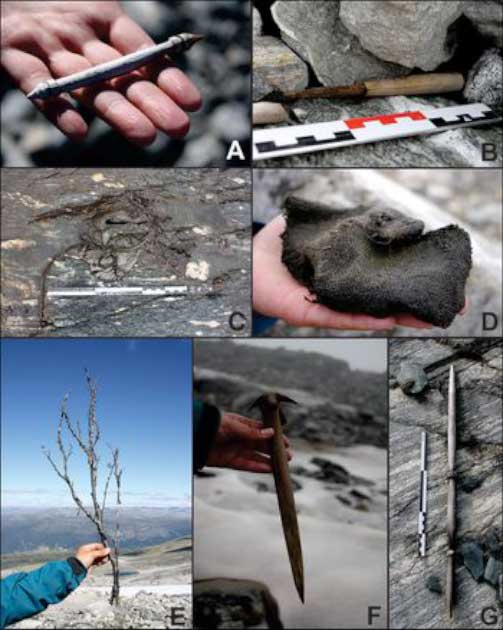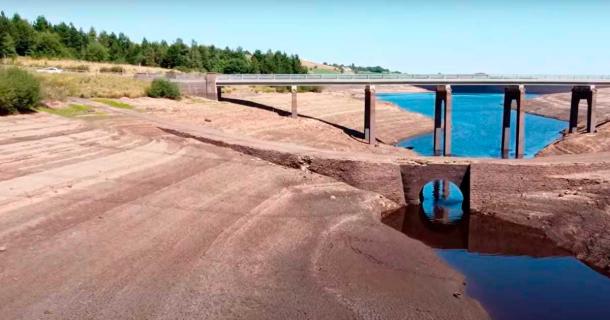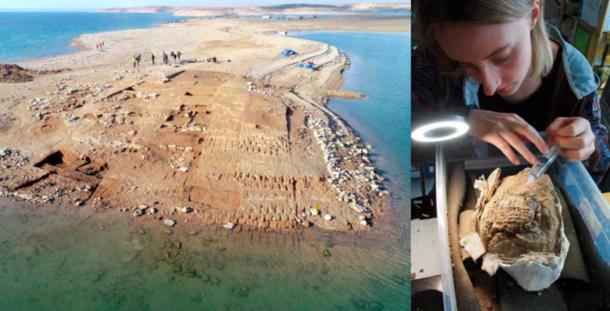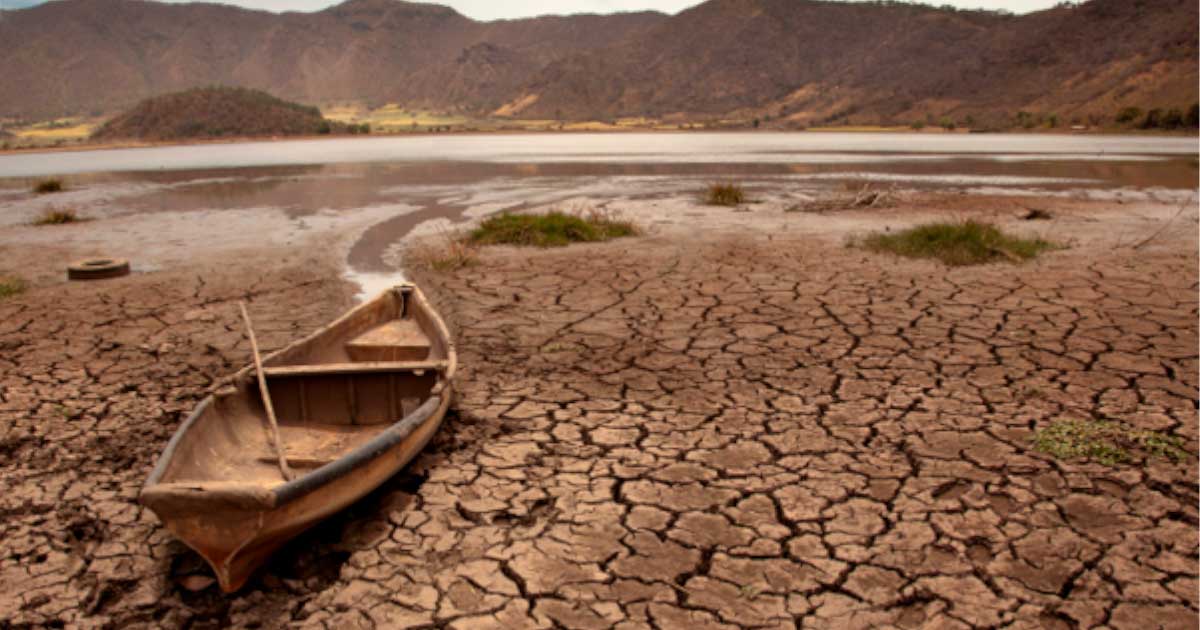Less Ice and Low Water Levels Reveal Hidden Treasures – At A Price
For the world of archaeology, climate change is a double-edged sword. On the one hand, receding ice and falling water levels are bringing to the surface entire villages and ruins of civilizations. On the other hand, climate change is also causing erratic weather cycles, including wetter winters, and unseasonal humidity is wreaking havoc on ancient artifacts, causing widespread disintegration and erosion.
Once an item like wood, for example, is freed from ice, it runs the risk of rapidly crumbling unless stored immediately in a freezer. Nevertheless, as droughts, wildfires, and melting glaciers have become the norm, shipwrecks, corpses, ghost villages, bridges, monuments, have come to the fore.
Ancient Origins has been reporting on global warming related discoveries for the last ten years and here are just a few climate change changes related to archaeology.

A few of the ancient artifacts revealed by climate change on the melting Lendbreen ice patch in Norway. (Glacier Archaeology Program & J. Wildhagen / Antiquity Publications Ltd)
Climate Change Gifts From The Melting Lendbreen Ice Patch
In Norway’s Jotunheim mountains, the Lendbreen ice patch was once a vital pass for Viking Age traffic, extensively used by the Vikings and medieval travelers from as far away as Rome. In 2011, the year of “The Great Melt,” the famously hidden pass revealed itself, and has since then provided the most archaeological finds from any ice patch in the world (though a Swiss Alps site is also worth noting). This includes hundreds of pre-historic cairns, a beeswax candle box, a 1,300 year-old-ski, an iron horseshoe, and an ancient Roman sandal.
- Climate Change Did Not Cause the Demise of Neanderthals
- Global Warming Reveals Amazing Glacier Artifacts from Switzerland’s Ancient Past
"It's like a time machine... the ice has not been this small for many, many centuries," said Lars Piloe, the Dane heading a team of "snow patch archaeologists," in an interview with The Guardian.
In 2016, ancient reindeer hunting arrowheads were discovered in the southern Jotunheim range.
Permafrost places like Alaska and Siberia have also yielded these types of finds, including the famous Otzi “the Iceman,” found in the Italian Alps.
In February of 2022, Antarctica sea ice cover shrank to a record low, which helped solve a great maritime mystery. A research vessel from South Africa used this opportunity to explore the Weddell Sea off the Antarctica coastline, where they finally found Sir Ernest Shackleton’s ship, lost to the ice in 1915.

The sunken village of Baitings and its famous packhorse bridge, pictured below the modern car bridge, have been exposed by record drought and heat for the first time since the mid-1950s. (YouTube screenshot / velomoho)
The UK Heatwave: Secret Gardens and a Sunken Village
As the UK comes to terms with its unprecedented heatwave, where temperatures in some places have shot up to over 40 degrees Celsius (104 degrees Fahrenheit), emergency measures are being undertaken. These include hosepipe bans and rationing of fresh water.
A secret Derbyshire garden, hidden for 300 years, was revealed by a heatwave. This florid 17th-century landscape is being called the Great Parterre and boasts an intricate display of flower beds and paths. This is after temperatures in the region crossed 38 degrees Celsius (100 degrees Fahrenheit), the highest on record for over 100 years.
Over the weekend, Ancient Origins reported on the reappearance of a sunken Yorkshire village. The reason? The water levels of the reservoir had sunken to such a low that the erstwhile village of Baitings, which had been submerged in the 1950s, was suddenly visible again. Along with the village, the famous centuries-old packhorse bridge was also exposed due to massively diminished water levels.
- How Global Warming Is Destroying Our Best-Preserved Archaeological Sites
- Intentional Forest Fires Shaped Forests in the USA More than Climate Change

Aerial view of the excavations revealing the Mitani Empire settlement of Kemune,, which was revealed by huge drops in the level of the Tigris River in Iraq. (© Universities of Freiburg and Tübingen, KAO)
Tigris River Drought Reveals Mitani Empire City
The region of Mesopotamia, one where Neolithic civilization began, has been witnessing devastating droughts for the past 20 years. The major Euphrates and Tigris rivers have been sucked dry by illegal irrigation, damming policies, and human overuse.
This year, the same story repeated itself. Extreme drought like conditions in Iraq caused the water levels of the Tigris to drop rapidly, revealing a 3,400 year old Mitani Empire settlement.
Back in 2018-19, a palace from this ancient urban center had emerged from the waters for the same reason: drought. Due to large amounts of water being drawn from the Mosul reservoir over the winter, along with the sustained drought, this year the entire city in the Kurdistan region was visible and explorable.
16th century Church Emerges From Mexican Reservoir
A 400-year-old Spanish colonial church, the Temple of Santiago, emerged in 2015 from the depths of the Nezahualcoyotl reservoir in Chiapas, Mexico. A massive drought that year caused the water level to drop by 82 feet (25 meters), revealing the colonial church which had disappeared under the reservoir water back in 1966. Also known as the Temple of Quechula, it was first built in the mid-1600s by a group of Dominican monks headed by Friar Bartolome de la Casas.
Top image: Dried up lake with boat, a scene now more common due to climate change. Source: maxcam / Adobe Stock
By Sahir Pandey
References
Lidz, F. 2021. As Earth Warms, Old Mayhem and Secrets Emerge From the Ice. Available at: https://www.nytimes.com/2021/11/02/science/climate-change-archaeology.html.
Mckie, R. 2010. How global warming is aiding – and frustrating – archaeologists. Available at: https://www.theguardian.com/science/2010/sep/26/global-warming-ancient-artefacts.
Simauchi, K. 2022. Extreme heat uncovers lost villages, ancient ruins and shipwrecks. Available at: https://www.stripes.com/history/2022-08-13/extreme-heat-uncovers-lost-villages-ancient-ruins-shipwrecks-6971397.html.
Taylor, G., Everett, R. 2022. How climate change is washing away precious evidence of our distant past. Available at: https://theconversation.com/how-climate-change-is-washing-away-precious-evidence-of-our-distant-past-175758.

















